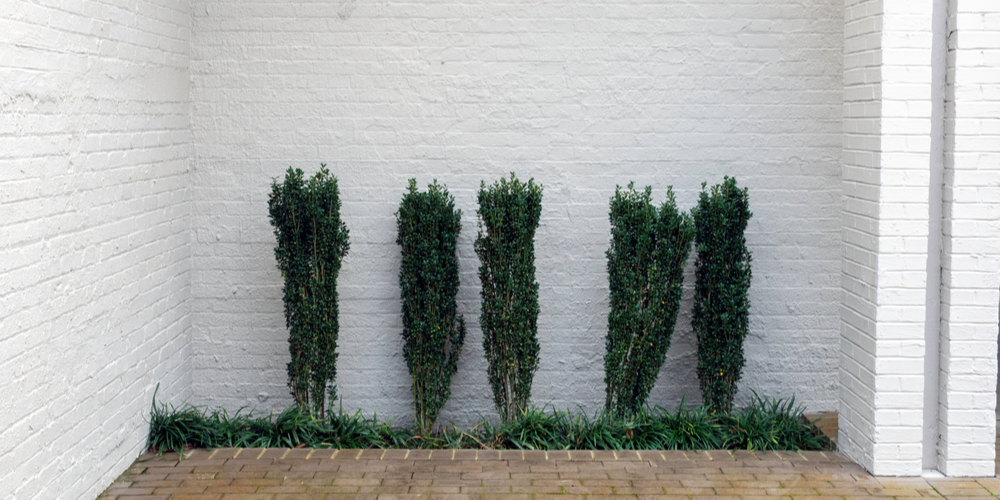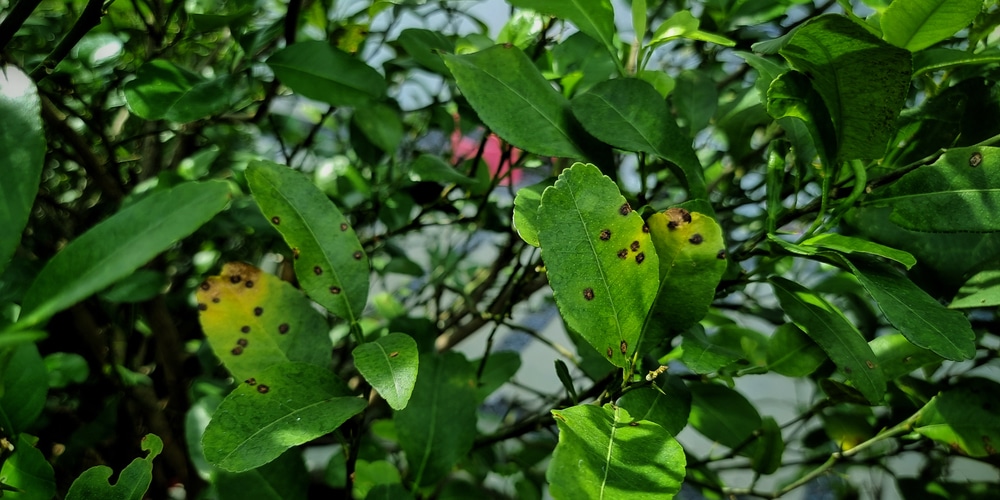There is a lovely shrub that has several common names. It can be called an “Asian holly,” but it isn’t really a member of the genus Ilex, to which true hollies belong. This plant goes by such names as sky pencil holly, Japanese pencil bush, and lacebark. This article will cover the most common sky pencil holly problems.
About Sky Pencil Holly
The sky pencil holly plant is a handsome little evergreen shrub that will grow well in USDA hardiness zones six through nine. This plant will work as an accent or foundation planting. Some people think this bush looks like a small yew.
This plant has a very upright and narrow shape, with branches that only grow out from the base. The foliage of this shrub is dark green and leathery, while the leaves themselves appear to be glistening. The foliage will remain all year long, though in cold winter climates, there may be some dieback during severe cold spells.
In the spring, this shrub will produce tiny white flowers that are little more than blips on the stems. It may be best to remove them if they bother you, as their appearance is quite slight compared with other flowering shrubs like rhododendrons and azaleas.
At this point, the sky pencil holly will be done blooming for the year. However, in late summer or early autumn, it may produce red berries that last into winter. These are poisonous to humans and animals alike. They also have no value as a food source for birds or other wildlife. This plant is deer resistant, at least partially, though there is a chance that rabbits and other rodents may eat this plant.
Common Sky Pencil Holly Problems
Here are common problems that you need to avoid when growing sky pencil holly:
Botryosphaeria Canker
This plant can sometimes be susceptible to botryosphaeria canker. The disease will cause the leaves of this shrub to turn brown, with scorched or burnt edges. It also appears as if there are small holes in the foliage, which is a symptom of a type of fungus that enters through these “wounds.”
If the leaves begin to drop in this manner, it is best to clip off and destroy afflicted foliage. When you do so, be sure to sterilize your pruners using a solution of one part bleach and three parts water. All fallen plant debris should be burned or discarded in bags that are sealed up tight.
Sometimes you may find brown spots or lesions on the bark of the Sky Pencil Holly. They will be slightly sunken in, while should they appear on twigs or stems, these growths should come off with a little pressure. If you think your sky pencil holly is infected with canker, contact your local extension office for advice.
Web Blight
Botryosphaeria or sky pencil holly is also vulnerable to web blight. This disease causes the branches of this shrub to curl tightly. It gives the appearance that they are wrapped in webbing, which can be quite startling when you first notice it.
Web blight will normally appear during late summer or early autumn. The main symptom is the webbing, though you will also see browning of foliage and twigs. This is not directly fatal to this type of plant, but it can weaken the shrub’s structure over time.
If you think your plant might be infected with web blight, prune out all affected branches up to healthy wood. When you do this, you will cut off some of the webbing, but not all of it. Then clean your pruners using the bleach and water solution mentioned earlier.
Do not fertilize or apply any other type of treatment during this time; it is best to let the shrub recover naturally. During winter, you may notice some dieback, which is normal and to be expected. However, if the shrub is severely weakened by these symptoms, it may not recover in time for spring.
For best results when growing sky pencil holly, plant it in an area that will get at least six hours of direct sun each day. Place this bush near a wall or fence where it can grow unobstructed. Also, be aware that this plant is extremely drought resistant once established.
If you are not sure whether your sky pencil holly has web blight or botryosphaeria canker, it is best to contact your local extension office for advice before attempting any treatments yourself.
Leaf Spot
This shrub can be susceptible to leaf spot. This is a fungal disease that causes small brown, black or red spots to appear on the foliage. It will appear during humid weather, though it prefers wet conditions.
Leaf spot may also cause the leaves of your holly to drop off before they are fully mature. Sometimes these spots will fall out of the foliage on their own, though you can always clip off any leaves that are severely damaged. This may also reduce the number of berries your plant produces.
If you want to grow sky pencil holly, choose a well-drained area with partial shade and fertile soil. It should be moist yet aerated; this allows the plant to get the water it needs while still having what it takes to thrive. Sky Pencil Holly is an evergreen that likes acidic soil, so add some peat moss or pine straw when planting.
When you are buying your Sky Pencil Holly, be sure to take a look at its foliage and berries before making your purchase.
Root Rot
The Sky Pencil Holly is prone to root rot, it will cause foliage loss off and on during the year. This does not always mean that you have a problem with your roots; there are other factors that can come into play here.
When these symptoms appear during summer or early fall, they may be caused by drought conditions or overwatering. Sky Pencil Holly does well in moist, but not wet soil; if you water it too much or keep it standing in water, this can breed root rot.
If the Sky Pencil Holly is infested with Sky Root Rot, its roots will begin to turn brown and die back. Eventually they will fall off completely. If you notice this in your Sky Pencil Holly, do not prune it back. This will harm the plant and open up even more locations for this fungus to be absorbed into the foliage or surrounding soil.
There is no cure for Sky Root Rot; the best thing you can do is make sure your Sky Pencil Holly has excellent drainage and aeration. You can also lower the soil’s acidity by adding sand or grit, as well as peat moss or pine straw. Sky Pencil Holly will need to stay in an area with partial shade and moist, but not wet soil.

